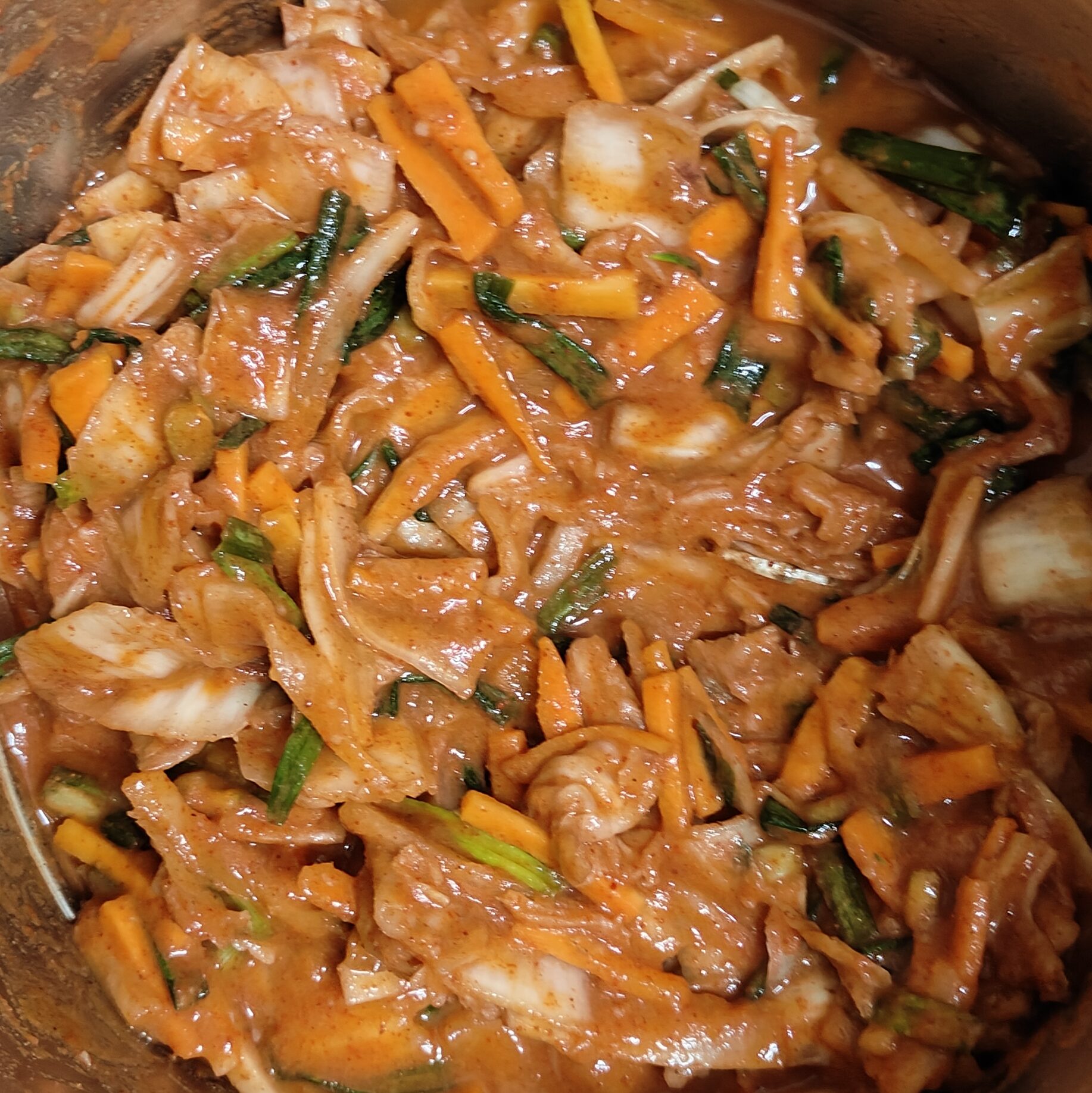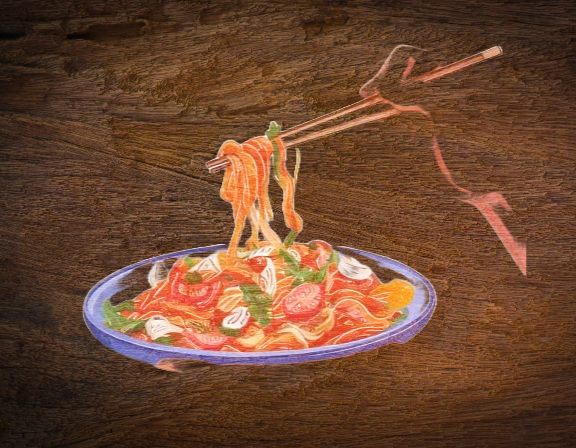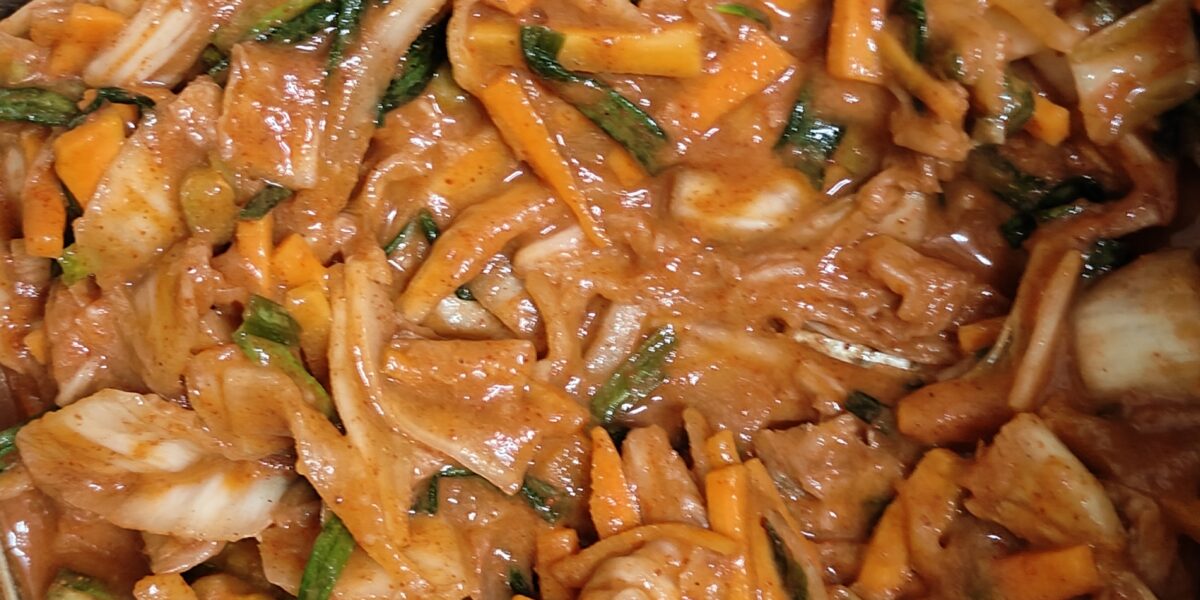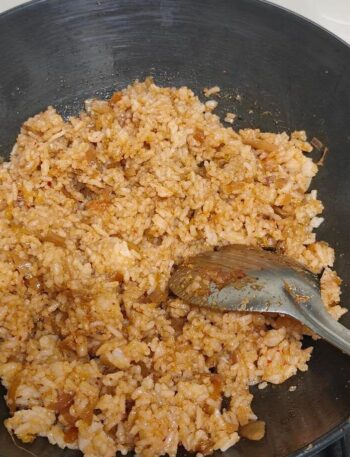Kimchi is type of fermented food originating from Korea. It can be prepared with different vegetables like Napa Cabbage, Radish, Cucumber, Green Onion, etc. Their Korean names for the Kimchi would differ based on the main vegetable being used for preparation.
The preparation of is Kimchi conducted as an event where the members of the family or a community get together and prepare it in bulk and share it among themselves. This event acts as a family bonding time or when conducted in a community it helps everyone to know each other and build new relations. Kimchi can be considered as an equivalent to Indian pickles.
Once the Kimchi is prepared it is usually stored in modern Kimchi Refrigerators for contemporary households. However, people living in the country side or in traditional houses store Kimchi in large earthen pots called Onggi, which prevent it from freezing during the winters and it slows down the fermentation process during the summers.
Kimchi is often eaten as side dish. However, you can make Kimchi Fried Rice, Kimchi Pancake, Kimchi Dumplings, Kimchi Stew (Kimchi Jjigae), Kimchi Ramyun, etc.
Kimchi is usually prepared with Shrimp and fish sauce, however, being a vegetarian it was hard for me to eat them in restaurants. Hence, I looked up the original recipe and tried to blend it according to my taste palattes. You can find the ingredients and steps for preparation below.

Ingredients for KIMCHI
MAIN INGREDIENTS
- ▢4 kg napa cabbage (8.8 pounds), remove thick outer cabbage leaves
- ▢16 cups water (3840 ml)
- ▢1.5 cups coarse sea salt or natural rock salt (for salt water), (285g / 10 ounces)
- ▢1/2 cup cooking salt , medium sized crystals (for sprinkle), (97g / 3.4 ounces)
KIMCHI SEASONING / KIMCHI PASTE
- ▢2 Tbsp rice flour (sweet rice flour)
- ▢1.5 cups water (360 ml)
- ▢1.5 cups gochugaru (Korean chili flakes), (141g / 4.97 ounces)
- ▢540 g Radish (19 ounces), julienned
- ▢1 Tbsp fine sea salt
- ▢90 g Spring Onions (3.2 ounces), cut in 5 cm / 2 inch length
- ▢140 g Carrots (4.9 ounces), julienned
- ▢1/4 cup minced garlic (42g / 1.48 ounces)
- ▢1/2 Tbsp minced ginger
- ▢2 Tbsp raw sugar
- ▢75 g onion (2.6 ounces), blended (with a stick blender or vegetable chopper) or finely grated
Instructions
- Cut the napa cabbage into quarters and rinse it in running water. Make sure the stem is intact.
- Dissolve the coarse salt in the water (16 cups) in a large bowl. Dip the napa cabbage in the saltwater one at a time and transfer it onto a tray for further salting.
- Pinch some cooking salt (1/2 cup total for all pickled cabbages) and rub over the thick white part of the cabbage. Open each leaf gently and sprinkle the salt over the thick white part. Repeat this for the rest of the cabbage. Reserve the saltwater from when you soaked the cabbage for later use.
- Put the salted cabbage in a large food grade plastic bag or large bucket (wedge side of the cabbage to be facing up) and pour in the reserved saltwater from step 2. Close the plastic bag. If using a bucket, get something heavy on top of the cabbage to press down (e.g heavy pot with water).
- Set the cabbage aside for 6 hours to pickle. Rotate the cabbage upside down every 2 hours. Using a large food grade plastic bag will make the turning process much easier than using a large bucket.
- Once the soaking process is finished, rinse the cabbages in running water, especially the thick white part of the cabbage, to get rid of the salt. Place them in a colander and allow to drain for 1 hour.
- While waiting, prepare the glutinous rice paste. Mix glutinous rice flour with the water (1.5 cup) in a saucepan and boil it over medium heat for 5-8 minutes, until it thickens. Once ready, transfer the rice paste to the medium-size bowl and let it cool. Add Korean chili flakes once it has cooled. Then, combine them well.
- Prepare a large mixing bowl and add radish and fine sea salt. Leave it for 10 minutes for the radish to salt down. Add spring onion, carrots, minced garlic, minced ginger, sugar, blended onion, and the Korean chili flakes mixture from step 5. Mix them well. Now the kimchi seasoning / kimchi paste is made, ready for use.
- Place a quarter of a cabbage on a tray. Spread the seasonings over each leaf. (You only need to season one side of the leaf.) 1 to 2 small fistfuls of seasoning is enough per quarter of cabbage. Repeat this step for the rest of the cabbage. Don’t pull the cabbage leaves off the stem, leave them attached so it holds together better.
- Transfer the kimchi into a kimchi container or an airtight container (and put the lid on). Leave it out at room temperature for 24 hours, then move it to the refrigerator. While you can start eating it once it’s chilled, you may want to wait 3-4 more days for it to develop more flavor.
- Once the kimchi is ready to eat, chop a small portion and store it in a smaller glass container. This makes it more convenient to serve with your meal. Keep the other batches intact in the large kimchi container. This way, you only cut it up as needed, which helps keep the remaining kimchi fresh longer.
Notes
- 1 Tbsp = 15 ml, 1 cup = 250 ml


